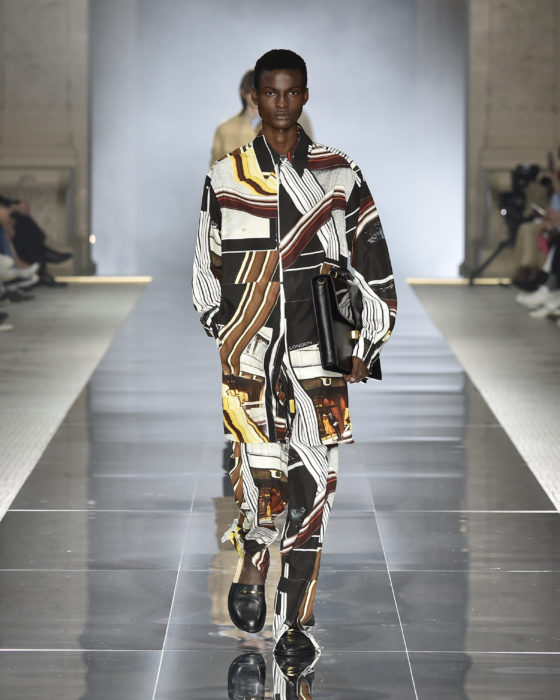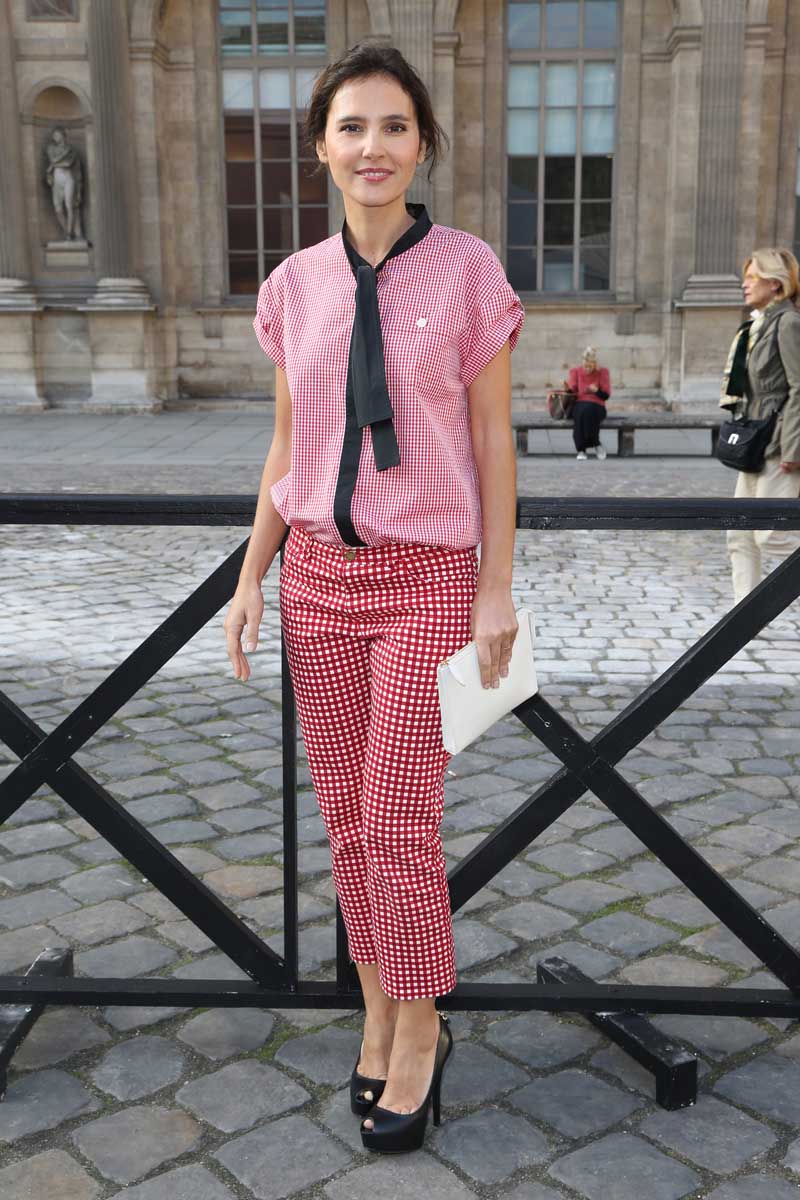
PARIS, Oct 6, 2006/ FW/ — More than two thirds of the Paris Prêt-à-Porter Week is now behind us and we have now a very clear view of the season’s trends, some already expressed in the New York and Milan shows, but always more blatently here in Paris, where they can always be detected already in the previous haute couture season.
Well, what are they? Black and white, certainly, as seen on many monochrome looks or on graphic prints. Flesh tones in illusion tulles or second skin jerseys, with a hint of red here, a flash of unusual blue shade there (from light turquoise to Klein blue), and that’s about it for colours, not forgetting silver though, which is to me a shiny metallic version of a white or light grey. Shapes seem to mix the eighties on the expanding shoulder line and the sixties on the waistline. Mini-dresses and micro trench coats (middle thigh level) are also everywhere in the collections, just like ample shorts. Pockets are bigger and can even be draped at times. Rounded or scalloped lines are seen on many a shortened sleeve. They might elsewhere reveal one only entire thigh in a long evening dress. Hoods appear here and there.
These trends, expressed here simply in a few lines, have been put under our fashion consciences here every hour, and every day in runway shows, to the point of being bored already. Lots of designers and houses seem to be merely following the same trends book, and this is the point I am trying to make today. You won’t be surprised to learn that, under these circumstances, the very few designers who seem to have followed their own inspiration only, bowed to enthusiastic audiences. So far, these are Peter Dundas for Emanuel Ungaro, Vivienne Westwood and Jean-Charles de Castelbajac, and that’s about it in the shows so far.
There used to be a time, not so long ago, when fashion designers did set the trend, they were not trend followers then, but real trend-setters. Nowadays, when marketing techniques rule for better and sometimes for worse, everything has to come from the street, especially the trends ! So, whether you are a patented member of the “arty” unwearable research set or a more commercial kind of designer, does not even seem to count these days, you will follow the book ! I believe innovation and sociology can sometimes go hand in hand, but to make these trends books such a basic rule is making everybody the potential victims of a new kind of dictatorship.
I am nostalgic of the free times when the designers themselves were trying to foresee what women needed for the future. This is how Coco Chanel invented the suit for women, a piece that revolutionized the clothing industry and much more. This is how Yves Saint Laurent created for ready-to-wear, the saharienne, giving women more freedom , to take only two accepted landmarks in recent history.
Nowadays, most designers seem to feel forced to follow the trends, and this can bring very bad results too. Think of the Cacharel by Clements Ribero collection for this coming spring. They have a Cacharel tradition of their own with small prints all over. This season, absolutely no prints were visible on their runway. Just because it’s not in the book. I cannot help but think that this could create a dangerous turn for the brand and make it face the risk of a real commercial downfall
On the other hand, we have designers and houses who, after having fought the replicas of their best-sellers that could invade the planet and make them die, no longer respect the territory of other houses’ codes, be these houses and designers dead or alive. Take the hoods, for instance, they remind me of the hoods created by Claude Montana some decade ago. Take the star, which used to be the emblem of Thierry Mugler only. This season, it is the main print of the Martin Margiella collection, the main embroidered pattern in Andrew Gn’s collection, a very important feature at no less than Viktor & Rolf, etc…
So, as a side effect to these trends books, designers do not respect the work of their peers as much as they used to. If we let things go further, contemporary brand’s identifiers will be lost because they will have been all mixed up: the ideal outfit for a marketer might well then consist for instance of a Jean-Paul Gaultier type of corset mixed with a suit of the typical Chanel tweed, worn over a John Galliano newspaper printed evening dress with anywhere you want a silver star reminiscent of the one created by Thierry Mugler. Let us hope that this never happens, and that real designers do not become only the new DJs of fahion: creating only mixes of their predecessors’ and rivals’ designs, according to the now overestimated trends books.
As they are also reading this blog too, I am asking these trend forecasters and designers alike, to recover their specifics and show respect to other’s designer creations in finding inspiration within themselves for better results and real public acceptance of a trend going hand in hand with brand identity building.
Allow me only one more example in recent past seasons: the Bohemian skirt, remember ? It was absolutely unpredicted by trend researchers when it appeared for the first time on Jean Paul Gaultier’s runway. It was, nevertheless, immediately a huge success everybody could witness on the street, and women have adopted it at once. You know, sometimes, designers can really create entirely on their own and this may result in a big trend, if and only if we allow them, if and only if they ask themselves not to be the hostages of trend researchers.
Some of their worse representatives are meeting the fashion show-goers everyday. We see them just before we show our invitations. They take a snapshot of the details they think new in our outfits and then bring them back triumphantly at the see of their respective agencies, like trophies. I might try and put a boxer short on my head today just to check if they take pictures of it…. You know what? I won’t, because I know they would, and I don’t want to see my boxer shorts on everybody’s heads next season’s runways!
[JEAN PAUL CAUVIN]
Illustration by JULIEN FOURNIE



